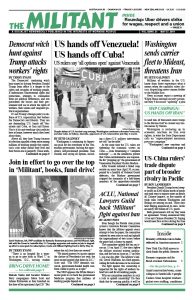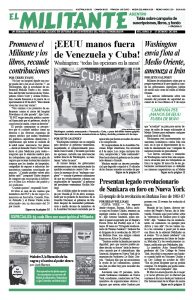SEATTLE — On May 1 dozens of construction workers here marched on their lunch hour to Google’s new “campus” on downtown Mercer Street, where two workers and two others were killed when a crane tower came down April 27. Ironworkers Travis Corbet and Andrew Yoder were working on disassembling the massive crane when it came apart and fell to the street, killing them, hitting six cars and killing Seattle Pacific University freshman Sarah Wong and 71-year-old Alan Justad, a retired city worker.
The workers laid a metal cross with two hardhats fastened to it at the site, along with a pair of bouquets for the other two victims. The cause is under investigation.
In addition to why the crane came down, area residents and others want to know why Mercer Street, a busy thoroughfare in the area connecting to Interstate 5, wasn’t closed to traffic.
The construction boom here, where Google, Amazon and other tech behemoths are expanding at a fever pitch, means that the city has more cranes running every day than any other city in the U.S. Property values are soaring and workers are being pushed out of area housing.
The South Lake Union area where the Google office is being built is the site of a lot of the construction. Paul Allen, a founder of Microsoft, bought up much of the area years ago and proposed the city turn it into a park, but the proposal was shot down. Amazon then moved in to buy up a bunch of the land to build its headquarters.
Other companies that have built in the area are Facebook and Uber. A lot of the construction, like the Google office, is developed by Allen’s real estate company, Vulcan.
Construction is one of the most dangerous occupations for workers. Over 20% of the 4,674 workers killed in private industry in 2017 were in construction. On average, the government reports, 44 people are killed working on or with construction cranes every year.
Some people have tried to blame the two workers, saying video of the crane coming down indicate bolts in the crane had been removed too early.
Workers here point to a different culprit. When he was interviewed at the annual May Day march in Seattle, Art Francisco, from Carpenters Local 30, told the Seattle Post-Intelligencer that the two workers killed during the crane’s collapse were working past eight hours, something emblematic of the frenzied construction going on in the city.
There needs to be more safety and less pressure on the workers to meet production schedules, he said.

